While video games today are almost a $200 billion dollar market, that wasn’t always the case. In fact, the video game industry is still relatively new when you consider that its popularity didn’t begin until the mid to late 1990s. Four decades later, the market was dominated by home video game consoles and PC gaming. Well before consoles like the PlayStation 5 and Xbox Series X were even a consideration, arcade games were the first real attempt at bringing gaming to the masses.
For younger generations, video and arcade games have been an always available fact of life, but for a slightly older crowd, arcades came well before home consoles. Arcades were where you went after school and you brought as many quarters as you could to try your hand at classic titles like Donkey Kong, Mortal Kombat, Space Invaders, and so many more.
In fact, it’s the success of these old arcade games that helped set the stage for the video game console era we know today.
With that in mind, let’s take a look at the 10 oldest arcade games in history.
#1: Skee-Ball
Invented in 1908 by Joseph Fourestier Simpson, Skee-Ball represents the first arcade game in history. Granted a patent for his game in December 1908, Simpson and his licensing partners looked to sell the game across the country.
Over the next few decades, Skee-Ball went through multiple owners and licensing partners to continue selling rights to the game and looking for broader distribution. By 1936, more than 5,000 “alleys” or Skee-Ball games were available around the country.
A combination of bowling and basketball, Skee-Ball players are looking to roll a ball down the alley and into one of several available holes. The higher up on the alley the holes are, the more points they are worth with the goal being to accrue as many points as possible.
Today, Skee-Ball remains a widely available game and is a staple presence in thousands of arcades around the U.S. and the world.

©975647/Shutterstock.com
#2: Pinball
The origins of the pinball machine go all the way back to the 18th century with various European games looking very similar. However, it wasn’t really until the 1930s when David Goddlieb’s Baffle Ball became the first coin-operated pinball-like machine. Baffle Ball would provide players with 5-7 balls for a penny, which was as inexpensive as a game could get, and it sold over 50,000 units.
Thankfully, the pinball era took a big leap forward just one year later with Gottlieb distributor Raymond Moloney creating his pinball game Ballyhoo, and it was an immediate hit selling over 50,000 units in the first 7 months.
The next big leap forward for pinball would only take another 2 years as pinball machines became electrified. The introduction of electrification would lead to balls being propelled out of a corner, as is the standard for pinball machines today. Even with electrification, surprisingly, it wasn’t until 1947 when flippers were introduced and it would take another almost 30 years before circuit boards and digital displays were added to create the fleshed-out versions of pinball machines the world is familiar with today.
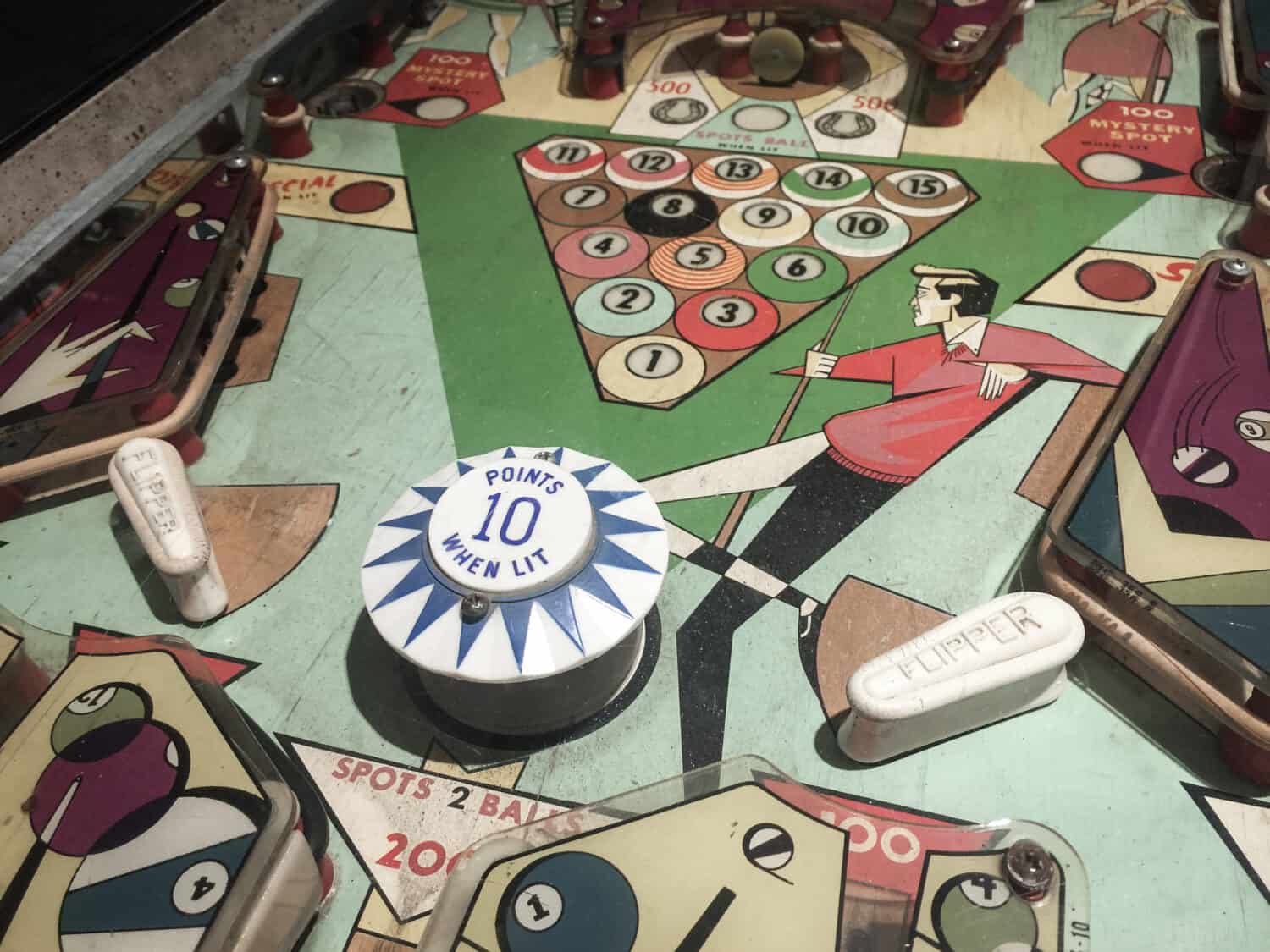
©Asa Smudhavanich/Shutterstock.com
#3: Spacewar!
The time is April 1962 and a group of students at MIT are working on programming a new game called Spacewar!, on the DEC PDP-1, one of the newest computers available during that era. Something of a cross between space action and combat, Spacewars!’s initial success happened on the MIT campus, where it would gain enough popularity to circulate to other college campuses.
The game would gain enough steam to migrate from its large computer hardware to a coin-operated video game, marking the first-ever video game as an arcade title. The game essentially pitted two spaceships, one controlled by each player, in an attempt to shoot each other and destroy their opponent.
Coincidentally, a copycat game of Spacewar!, known as Computer Space, was developed in 1971 by, among other names, one Nolan Bushnell. What makes Bushnell’s copycat remarkable is that it became the first commercially sold arcade video game while also being considered superior to Spacewar!
What is notable about this copycat is even though Bushnell would quit manufacturing Computer Space one year later, he would eventually go on to start a little-known company called Atari.
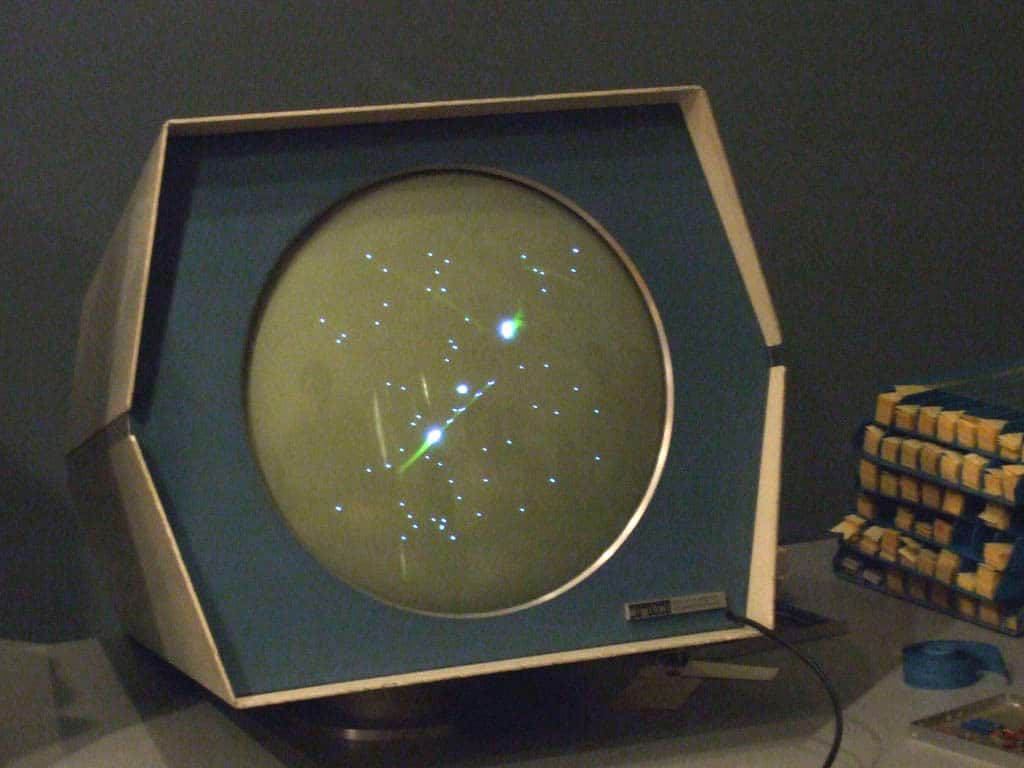
©Kenneth Lu / Creative Commons Attribution 2.0 Generic – Original / License
#4: Pong
Easily one of the best-known names in all of video game history, Pong actually saw its start as one of the oldest arcade games. Developed and released by Atari in November 1972, Atari was having difficulty keeping up with demand having sold over 4,000 units by 1974. Grossing more than $40 per day for Atari, it was a long cry from August 1972 when Pong was first tested at Andy Capp’s Tavern in Sunnyvale, California.
With 7-8 machines in the bar, it took only a short amount of time before the bar owners called Atari to tell them the machines were malfunctioning. It turns out they were not malfunctioning, but as a coin-operated entity, so many coins had been entered to play that the machine had become jammed due to being completely full.
Essentially a table tennis-themed title, the premise behind Pong was really quite simple with its 2D graphics. Pong asks two players to control in-game paddles to hit a ball back and forth in a style that is very similar to tennis. The goal is to earn 11 points with points being earned when a player misses returning the ball back to you.

©Original: Bumm13 Vector: Beao, Public domain, via Wikimedia Commons – Original / License
#5: Speed Race
Regarded as the first vertical scrolling title, Speed Race was developed and released in Japan in November 1974. Designed by Tomohiro Nishikado, Speed Race incorporated a steering wheel to help maneuver a vehicle as it moved along a vertically scrolling road. As part of the game, you must drive past other cars on the road without incident, and the faster you go, the more points you are rewarded within a 90-second time limit.
The popularity of Speed Race in Japan would quickly lead to a release in the U.S. by Midway Manufacturing in February 1975 as Wheels. An upright arcade cabinet, Wheels was such a hit in the U.S. that it became the highest-grossing arcade game in 1975 and then again in 1976.
The game would be followed up by a number of sequels including Speed Race DX and Speed Race Twin in Japan and Wheels II in the United States. All totaled, between Japanese developer Taito and Midway, the Speed Race series would spawn 14 titles between November 1974 and June 1985.
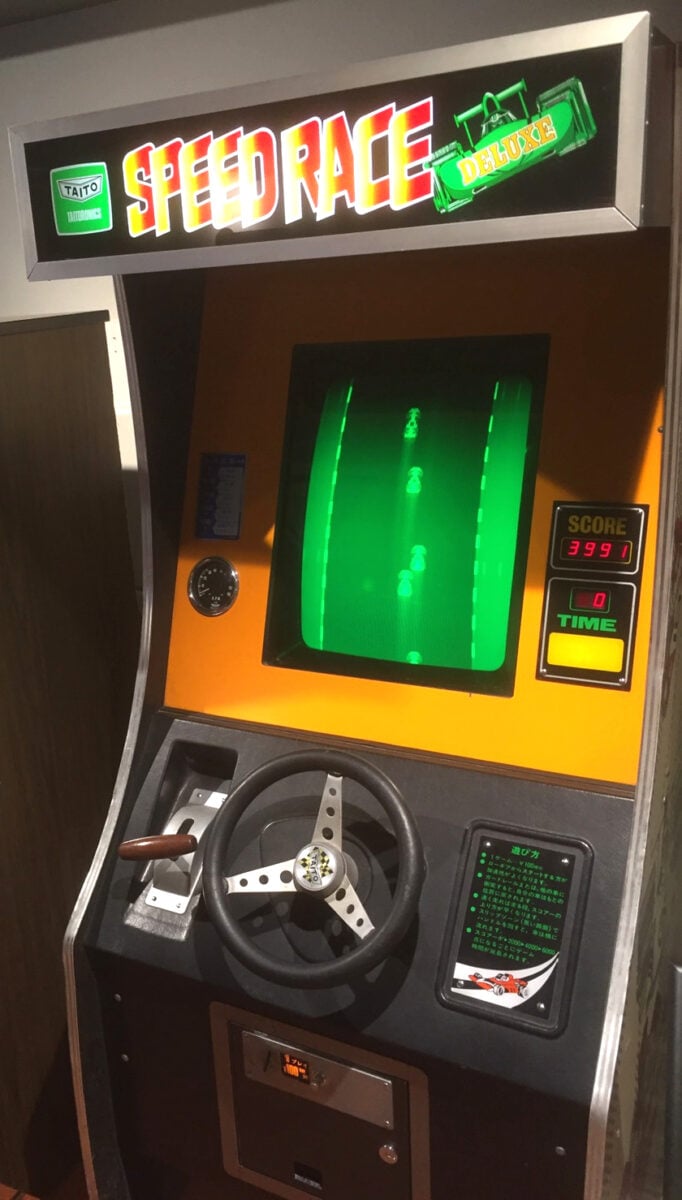
©8joKeaton / Creative Commons Attribution-Share Alike 4.0 International license. – Original / License
#6: Indy 800
Released by Atari in the U.S. in 1975 and in Japan in September of the same year, Indy 800 is one of the most prominent early racing games in arcades. The namesake of the Atari-produced arcade system was meant to simulate the Indianapolis 500 with players competing against one another in a race.
With Indy 800, up to 8 players were able to race blocky cars around a very basic track while enjoying an overhead view. Every player had a different color car so they could keep track of their position and attempt to maneuver around other drivers.
Although the cabinet size was roughly 16 square feet, which has you standing shoulder-to-shoulder with other drivers, Indy 800 still managed to become the 4th highest-earning arcade game of 1976. Also popular in Japan, Indy 800 would go on to become the 10th highest-earning arcade game of 1976 in that country. Eventually, a four-player version was released in 1976 as well and would see similar success to its older sibling.
#7: Gun Fight
Another Taito release in Japan and Midway in North America, Gun Fight, or Western Gun as it’s known in Japan, was released in September 1975 and November 1975, respectively.
The premise of the game revolves around two Old West cowboys who are both armed with revolvers and square off in a traditional movie-like duel. As the first game to showcase human-to-human combat, Gun Fight also has the honor of being the first arcade game to use the microprocessor chip.
The gameplay focuses on the two joysticks available to each player, with an 8-way joystick for moving the cowboy around and the other joystick for navigating the direction you intend to shoot. To help make gameplay a little more interesting, Taito and Midway both added various obstacles like stagecoaches and cacti so you weren’t just directly facing off against your opponent.
The Japanese version of the game allowed players to move around on screen, while Midway kept players in one position but increased the size of each player for a more engaging experience. Selling more than 8,600 cabinets in the U.S., Gun Fight was the 3rd highest-grossing game of 1975, the 2nd highest-grossing in 1976, and in 5th place by 1977.
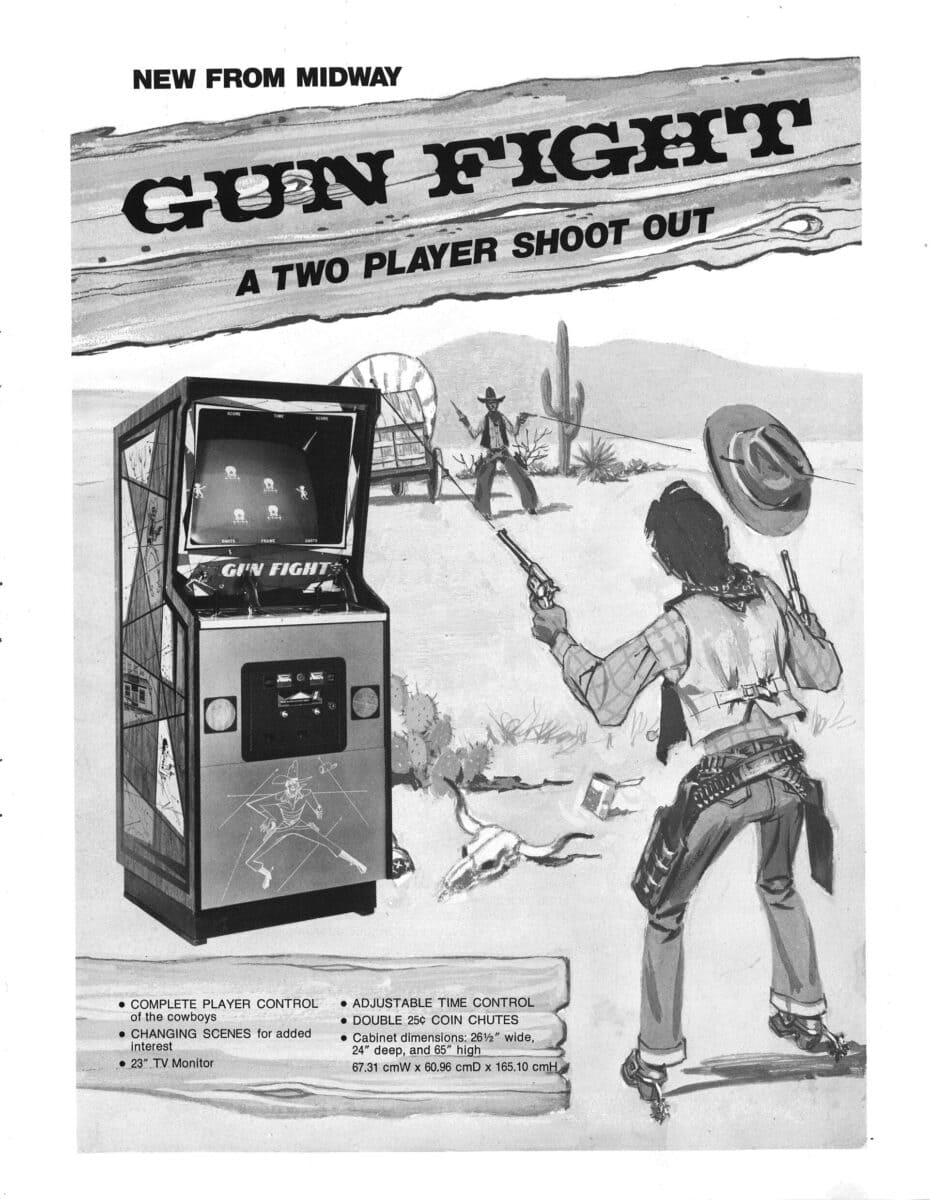
©Midway Manufacturing Co. / Public Domain – Original / License
#8: Breakout
Published and developed by Atari in May 1976, Breakout was designed by none other than Steve Wozniak, based on a design from Atari founder, Nolan Bushnell.
While Wozniak would play an integral role in the release of Breakout, he is best known as being the co-founder of Apple with Steve Jobs. In fact, it was Steve Jobs who helped create the circuit board that powered Breakout.
A timeless classic that still exists in various forms today, Breakout began with 8 rows of different colored bricks. The player uses a single ball to eliminate as many brick colors as possible without missing the ball as it bounces back toward the player’s paddle after hitting a brick. The gameplay was very straightforward but also increasingly difficult as ball speeds would increase after different intervals were passed in the game.
By October 1976, Breakout would already be regarded as the 5th highest-earning arcade game and would go on to become the 3rd highest in 1977 and 5th highest-earning in 1978 with over 11,000 cabinets produced, earning Atari an estimated $11 million in total revenue.
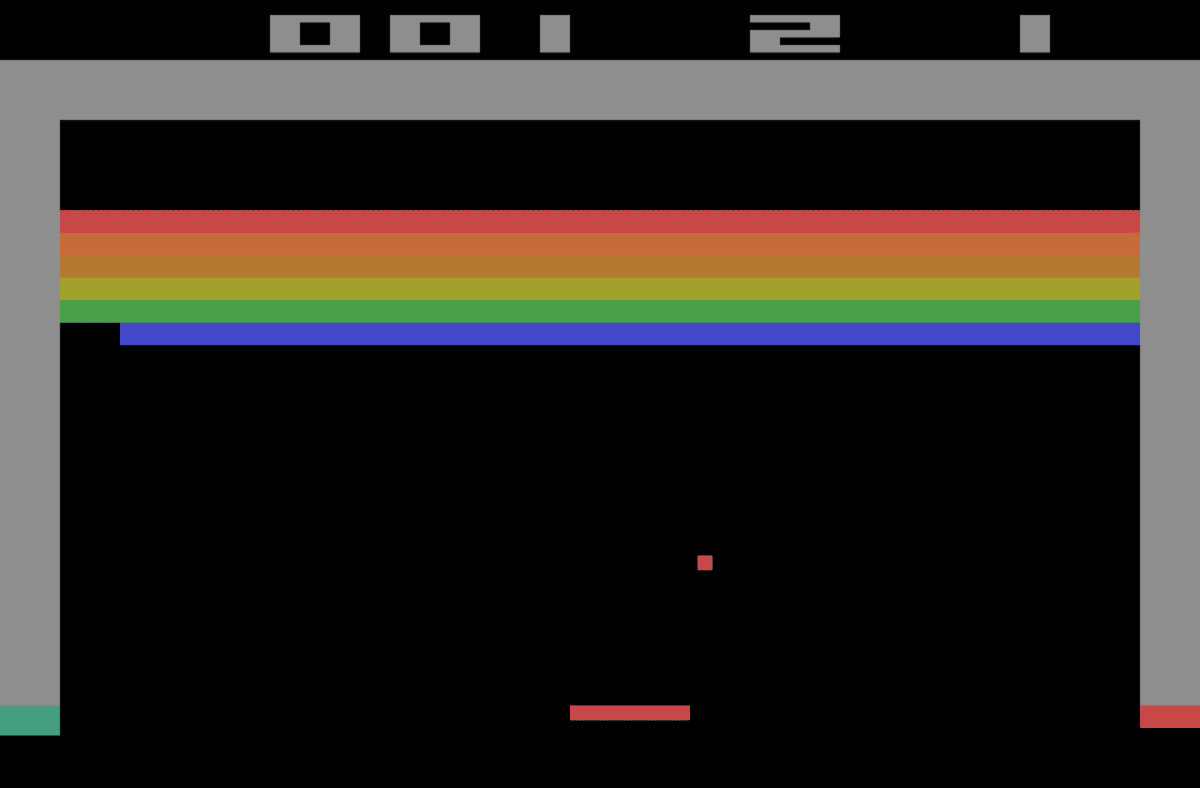
©Atari Inc. / Public Domain – Original / License
#9: Night Driver
Developed by Atari and released in October 1976, Night Driver was a highly praised arcade title that is often believed to be one of the first to feature first-person graphics. With a black and white display, the hood of a player’s car was often a plastic overlay on the console unit itself.
Gameplay is very simple as the player must drive the car without crashing into either side of the road as indicated by staggered road reflectors. Operation of the vehicle is done through a single pedal for acceleration, while you have the wheel for steering and a 4-selection lever for each of the various gears available.
As you achieved longer and longer trips through the game, you could opt between 3 levels of difficulty though each one would get harder as you made your way through the game. Track lengths were available between 50-125 seconds, which was something the arcade owner would decide for each coin-operated unit. The 6th highest-earning arcade game of 1977, Night Driver would stay in the top 10 for each of the following 2 years.
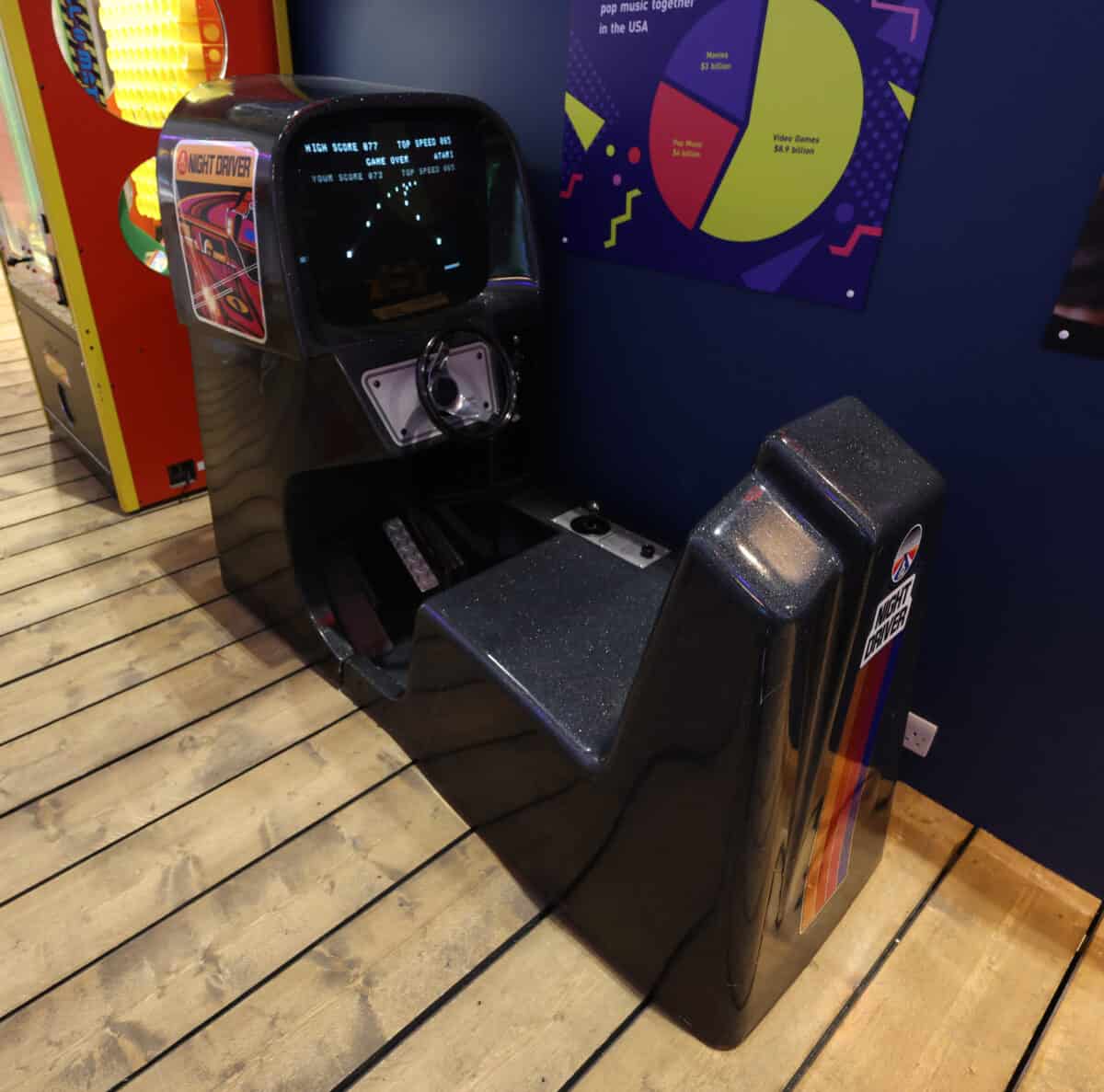
©Geni / Creative Commons Attribution-Share Alike 4.0 International license – Original / License
#10: Space Invaders
While Atari would release a few more arcade titles between 1976 and 1977, they were all commercially disappointing until the golden age of arcade games finally began in April 1978. Taito’s release of Space Invaders would kick the arcade game world into high gear and eventually set the stage for the home video game industry.
Released in April 1978 in Japan and November 1978 in North America, Space Invaders is a shoot ’em-up title that was, by every measure, a huge commercial success. By 1982, Space Invaders would earn Taito and its North American partner, Midway, more than $3.8 billion in total revenue.
For all the revenue it drove, Space Invaders had very basic gameplay in which a laser cannon is moved by the player across the screen to fire at aliens as they drop down toward the player’s cannon. If a row of aliens reaches the player first, it’s game over. If the player can defeat all of the aliens, another wave appears and endlessly loops.
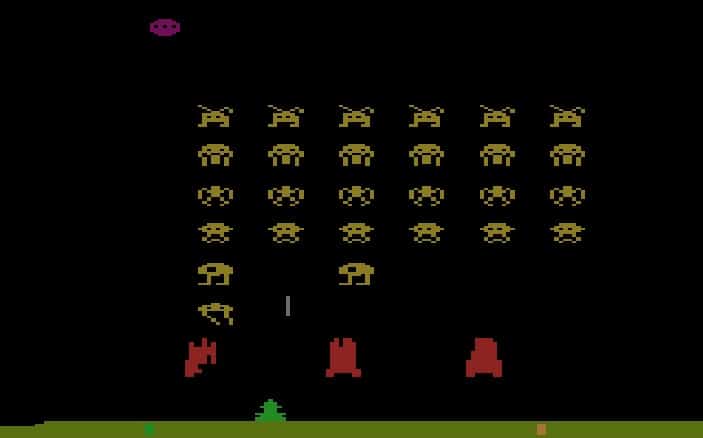
©mobygames.com – Original / License
The Oldest Arcade Games in History: Summary
| Rank | Name | Year Founded |
|---|---|---|
| #1 | Skee-Ball | December 1908 |
| #2 | Pinball | 1931 (Exact month unknown) |
| #3 | Spacewar! | April 1962 |
| #4 | Pong | November 1972 |
| #5 | Speed Race | November 1974 |
| #6 | Indy 800 | April 1975 |
| #7 | Gun Fight | September 1975 |
| #8 | Breakout | May 1976 |
| #9 | Night Driver | October 1976 |
| #10 | Space Invaders | April 1978 |
Wrapping Up
The history of arcade games is unquestionably well worth remembering as it began a new era in entertainment and excitement. Video games are a globally dominant industry and its wings have helped spread into other industries with video games turning into movies, books, TV shows, and more.
All of these successes can be traced back to the origins of the arcade where video games first began to grab the attention of the public who were looking for new ways to take advantage of improving computer technology.